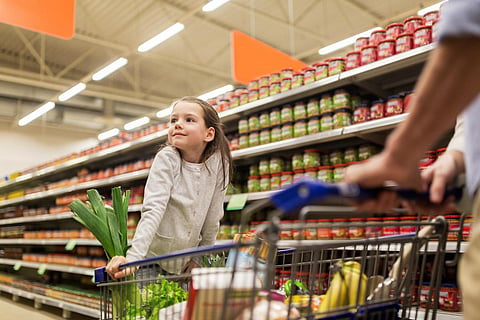WEDNESDAY, Sept. 18, 2024 (HealthDay News) -- The corner bodega or neighborhood Kwik-E-Mart could be fueling childhood obesity in the United States, a new study suggests.
Children have a more than 50% increased chance of obesity if they live in a place without ready access to full-fledged grocery stores stocked with fresh and healthy foods, researchers report.
These results show that access to healthy food “may be an important factor in preventing the development of obesity later in childhood and adolescence,” said lead researcher Izzuddin Aris, an assistant professor of population medicine at the Harvard Pilgrim Health Care Institute.
For the study, researchers examined data from more than 28,000 U.S. children gathered as part of a National Institutes of Health study on child health.
The team assessed how many of these kids lived in neighborhoods with limited access to healthy food -- defined as a locale where a third or more residents live more than one-half mile from a grocery store in urban areas, or more than 10 miles in rural areas.
About 23% of the children had mothers who, while pregnant with them, lived in a low food-access neighborhood, results show. Around 24% of the kids lived in such an area during early childhood.
Researchers found that living in such a neighborhood during pregnancy or early childhood was associated with higher childhood BMI at ages 5 and 15.
Those kids also had a more than 50% chance of being obese at ages 5, 10 and 15, results show.
The results jibe with earlier research showing that childhood obesity rates are steadily rising, even though food insecurity continues to grow among U.S. children. About 17% of kids lived in a home with food insecurity in 2022, up from nearly 13% in 2021, researchers noted.
The new study was published Sept. 16 in the journal JAMA Pediatrics.
Previous studies also found that people living in the poorest U.S. neighborhoods had about an 80% increased higher obesity risk, researchers said in background notes.
“Our findings support a focus on investments or strategies to improve healthful food access in early life,” Aris said in a Harvard news release.
“This includes incentivizing new supermarkets in existing low-income, low food-access neighborhoods, providing healthy-choice pantries and improving access to healthier food choices in small retail corner and convenience stores,” Aris added. “Such investments could play a crucial role in preventing child obesity and promoting healthier communities.”
More information
The Food Research & Action Group has more about food insecurity and obesity.
SOURCE: Harvard University, news release, Sept. 16, 2024


